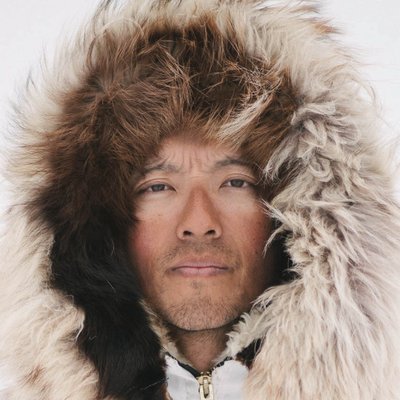Tornadoes are some of the most destructive forces of nature.
They’re also, somehow, gorgeous. And truly awesome.
If you dig storms and tornadoes, check these out too.
For more on . . .
-N- Stuff : A Peace with the Storm : Storm Chasers in the Wild
ideas : People : stories.
the Human Being stuff
Tornadoes are some of the most destructive forces of nature.
They’re also, somehow, gorgeous. And truly awesome.
If you dig storms and tornadoes, check these out too.
For more on . . .
-N- Stuff : A Peace with the Storm : Storm Chasers in the Wild

Sigvaun Kaleak and his father Raleigh, wearing traditional ice camouflauge parkas, are lifelong whalers. Although European whaling decimated the global whale population by the 1900, the Iñupiat maintained a sustainable harvest of bowheads (via).
The Iñupiat have hunted whales here {high above the Arctic Circle} for millennia, often waiting for fickle sea ice conditions in an era of changing climate. The unpredictability of this coastal Arctic environment means that the Iñupiaq are the carriers of a vast ecological knowledge.
“Kiliii Yuyan is a Nanai (Siberian Native) and Chinese-American photographer whose award-winning work chronicles indigenous and conservation issues.” His “mission is to present collaborative new narratives of indigenous culture. He is fascinated by the essential relationship between humans and the natural world. Kiliii’s photography presents an alternative vision of humanity’s greatest wealth—community, culture and the earth” (via).
And he does a pretty damn good job.
Looks cold, simple, and beautiful.

A rare windless day results in glassy waters at the edge of the sea ice on the Chukchi Sea. Days like this are cherished good weather windows and are the time when the volatile sea ice environment is the safest (via).

You can see all of Kiliii Yuyan’s images from People of the Whale here. His other works are worth checking out too, especially his Living Wild collection which “documents a group of 21st century hunter-gatherers as they rediscover the traditional living skills of the Paleolithic.” It and they are pretty wild.

For more on . . .

Photo by Ami Vitale
(From Wild Ideas Worth Living Podcast)
In war-torn Gaza, Ami Vitale was asked to “focus on the violence.” Then, one day, while her and all the other photo journalists were capturing kids throwing rocks and soldiers bullets, Ami heard music. She followed it. And found a wedding.
“Why aren’t we telling these stories too,” she thought, “the ones that allow us to relate to one another as human beings.” She suddenly realized she was telling a lie, because she was only telling half the story. “There were all these other stories around us. Stories that allowed us to relate to one another as human beings, {stories} that allowed us to connect” by reminding us that we “share the same things on this planet.”
“As a journalist,” she continues, “I was being asked to create more fear and polarization on this planet and see those people as other and different than us. The truth is, it was just a beautiful young couple wanting the same things that we all want in life. That was when I stopped and asked myself, ‘Why aren’t we telling these stories too?’”
From then on, Ami Vitale changed the way she tells stories. She still captures the hard and terrible ones because that is still very much a part of life, but she also seeks out the beautiful and hopeful, the ones that inspire and spark joy, because those too are a part of life. And Ami Vitale wants to provide a balance and reminder “of our connections”, that we are all human beings on this world, longing for the same things, eager to tell and share our stories.
Our world could use a lot more people like Ami Vitale.
You can listen to her full interview at Wild Ideas Podcast or watch her How to Photograph Hope presentation for NatGeo Storytellers Summit.
For more on . . .
I’ve sort of lost track of Mumford and Sons since their album Babel. Their latest, Delta has me falling back in love. It feels, lyrically and musically, like they’ve finally returned to their roots.
By the way, incase you were wondering, Delta doesn’t have any real deep meaning. It simply means “the fourth letter of the Greek alphabet (Δ, δ),” or “the fourth in a series of items, categories, etc.” Like the fourth album produced by band. In case you were wondering.
You can listen to the full album on Youtube or Spotify.
For more on . . .



National Geographic recently announced the winners of the Travel Photographer of the Year contest for 2018. You can see the winners here and the people’s choice awards here.
I don't know why, but that alligator one really intrigues me. Maybe it's because I just spent the last ten days in a cabin on a lake and watched my kids play, almost daily, some form of king of the mountain (on rafts). I bet that's what those gators are doing too. And if I were the current king, I'd be leery of the big momma coming to claim her throne . . . sheesh.
For more on . . .
-N- Stuff : Photography : best of . . .